Vitor Fortes Rey
TinierHAR: Towards Ultra-Lightweight Deep Learning Models for Efficient Human Activity Recognition on Edge Devices
Jul 10, 2025Abstract:Human Activity Recognition (HAR) on resource-constrained wearable devices demands inference models that harmonize accuracy with computational efficiency. This paper introduces TinierHAR, an ultra-lightweight deep learning architecture that synergizes residual depthwise separable convolutions, gated recurrent units (GRUs), and temporal aggregation to achieve SOTA efficiency without compromising performance. Evaluated across 14 public HAR datasets, TinierHAR reduces Parameters by 2.7x (vs. TinyHAR) and 43.3x (vs. DeepConvLSTM), and MACs by 6.4x and 58.6x, respectively, while maintaining the averaged F1-scores. Beyond quantitative gains, this work provides the first systematic ablation study dissecting the contributions of spatial-temporal components across proposed TinierHAR, prior SOTA TinyHAR, and the classical DeepConvLSTM, offering actionable insights for designing efficient HAR systems. We finally discussed the findings and suggested principled design guidelines for future efficient HAR. To catalyze edge-HAR research, we open-source all materials in this work for future benchmarking\footnote{https://github.com/zhaxidele/TinierHAR}
TxP: Reciprocal Generation of Ground Pressure Dynamics and Activity Descriptions for Improving Human Activity Recognition
May 04, 2025Abstract:Sensor-based human activity recognition (HAR) has predominantly focused on Inertial Measurement Units and vision data, often overlooking the capabilities unique to pressure sensors, which capture subtle body dynamics and shifts in the center of mass. Despite their potential for postural and balance-based activities, pressure sensors remain underutilized in the HAR domain due to limited datasets. To bridge this gap, we propose to exploit generative foundation models with pressure-specific HAR techniques. Specifically, we present a bidirectional Text$\times$Pressure model that uses generative foundation models to interpret pressure data as natural language. TxP accomplishes two tasks: (1) Text2Pressure, converting activity text descriptions into pressure sequences, and (2) Pressure2Text, generating activity descriptions and classifications from dynamic pressure maps. Leveraging pre-trained models like CLIP and LLaMA 2 13B Chat, TxP is trained on our synthetic PressLang dataset, containing over 81,100 text-pressure pairs. Validated on real-world data for activities such as yoga and daily tasks, TxP provides novel approaches to data augmentation and classification grounded in atomic actions. This consequently improved HAR performance by up to 12.4\% in macro F1 score compared to the state-of-the-art, advancing pressure-based HAR with broader applications and deeper insights into human movement.
Hybrid CNN-Dilated Self-attention Model Using Inertial and Body-Area Electrostatic Sensing for Gym Workout Recognition, Counting, and User Authentification
Mar 08, 2025Abstract:While human body capacitance ($HBC$) has been explored as a novel wearable motion sensing modality, its competence has never been quantitatively demonstrated compared to that of the dominant inertial measurement unit ($IMU$) in practical scenarios. This work is thus motivated to evaluate the contribution of $HBC$ in wearable motion sensing. A real-life case study, gym workout tracking, is described to assess the effectiveness of $HBC$ as a complement to $IMU$ in activity recognition. Fifty gym sessions from ten volunteers were collected, bringing a fifty-hour annotated $IMU$ and $HBC$ dataset. With a hybrid CNN-Dilated neural network model empowered with the self-attention mechanism, $HBC$ slightly improves accuracy to the $IMU$ for workout recognition and has substantial advantages over $IMU$ for repetition counting. This work helps to enhance the understanding of $HBC$, a novel wearable motion-sensing modality based on the body-area electrostatic field. All materials presented in this work are open-sourced to promote further study \footnote{https://github.com/zhaxidele/Toolkit-for-HBC-sensing}.
Beyond Confusion: A Fine-grained Dialectical Examination of Human Activity Recognition Benchmark Datasets
Dec 12, 2024



Abstract:The research of machine learning (ML) algorithms for human activity recognition (HAR) has made significant progress with publicly available datasets. However, most research prioritizes statistical metrics over examining negative sample details. While recent models like transformers have been applied to HAR datasets with limited success from the benchmark metrics, their counterparts have effectively solved problems on similar levels with near 100% accuracy. This raises questions about the limitations of current approaches. This paper aims to address these open questions by conducting a fine-grained inspection of six popular HAR benchmark datasets. We identified for some parts of the data, none of the six chosen state-of-the-art ML methods can correctly classify, denoted as the intersect of false classifications (IFC). Analysis of the IFC reveals several underlying problems, including ambiguous annotations, irregularities during recording execution, and misaligned transition periods. We contribute to the field by quantifying and characterizing annotated data ambiguities, providing a trinary categorization mask for dataset patching, and stressing potential improvements for future data collections.
GenAI Assisting Medical Training
Oct 21, 2024
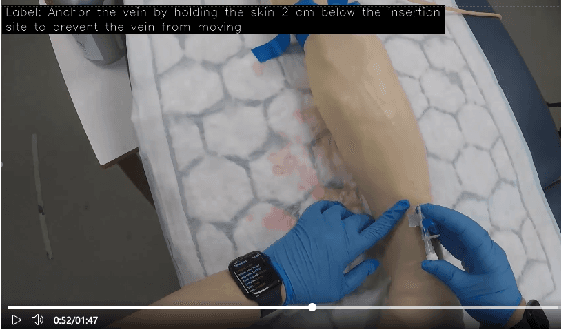
Abstract:Medical procedures such as venipuncture and cannulation are essential for nurses and require precise skills. Learning this skill, in turn, is a challenge for educators due to the number of teachers per class and the complexity of the task. The study aims to help students with skill acquisition and alleviate the educator's workload by integrating generative AI methods to provide real-time feedback on medical procedures such as venipuncture and cannulation.
MuJo: Multimodal Joint Feature Space Learning for Human Activity Recognition
Jun 06, 2024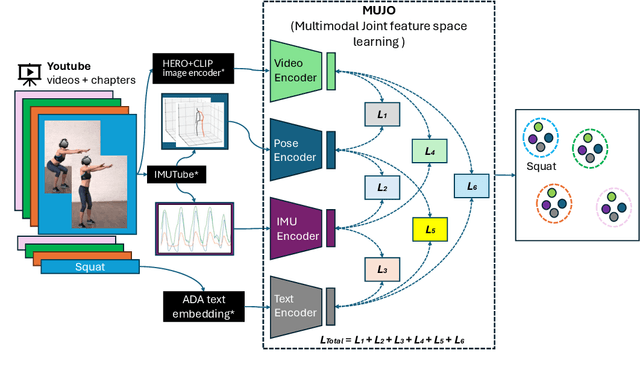

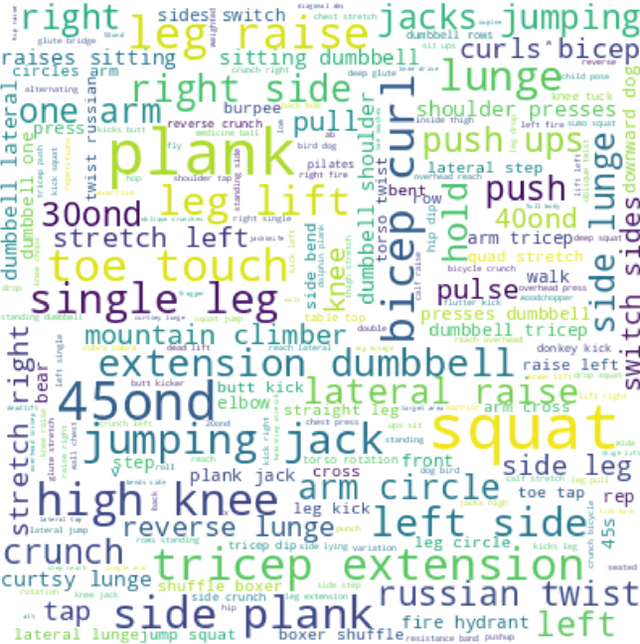
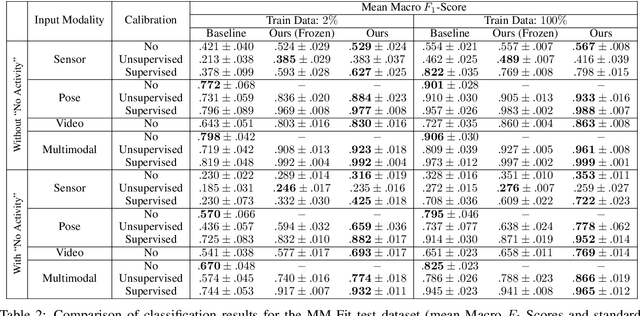
Abstract:Human Activity Recognition is a longstanding problem in AI with applications in a broad range of areas: from healthcare, sports and fitness, security, and human computer interaction to robotics. The performance of HAR in real-world settings is strongly dependent on the type and quality of the input signal that can be acquired. Given an unobstructed, high-quality camera view of a scene, computer vision systems, in particular in conjunction with foundational models (e.g., CLIP), can today fairly reliably distinguish complex activities. On the other hand, recognition using modalities such as wearable sensors (which are often more broadly available, e.g, in mobile phones and smartwatches) is a more difficult problem, as the signals often contain less information and labeled training data is more difficult to acquire. In this work, we show how we can improve HAR performance across different modalities using multimodal contrastive pretraining. Our approach MuJo (Multimodal Joint Feature Space Learning), learns a multimodal joint feature space with video, language, pose, and IMU sensor data. The proposed approach combines contrastive and multitask learning methods and analyzes different multitasking strategies for learning a compact shared representation. A large dataset with parallel video, language, pose, and sensor data points is also introduced to support the research, along with an analysis of the robustness of the multimodal joint space for modal-incomplete and low-resource data. On the MM-Fit dataset, our model achieves an impressive Macro F1-Score of up to 0.992 with only 2% of the train data and 0.999 when using all available training data for classification tasks. Moreover, in the scenario where the MM-Fit dataset is unseen, we demonstrate a generalization performance of up to 0.638.
Enhancing Inertial Hand based HAR through Joint Representation of Language, Pose and Synthetic IMUs
Jun 03, 2024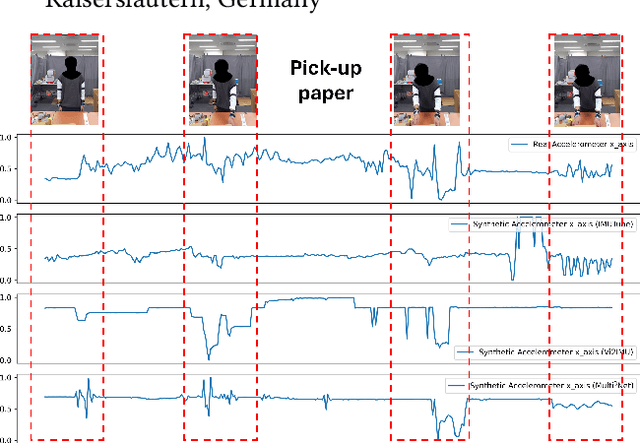
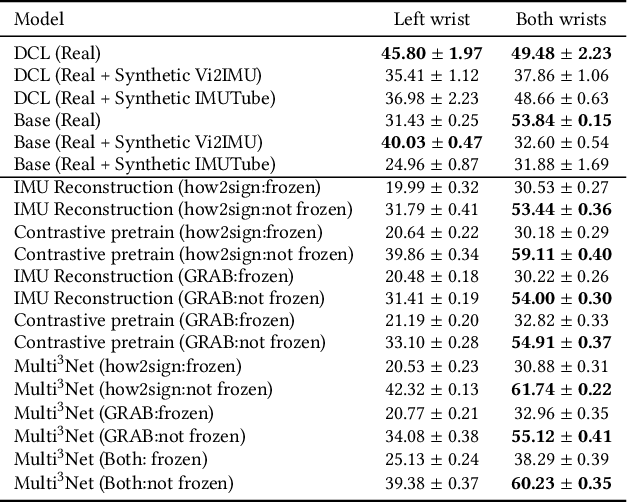
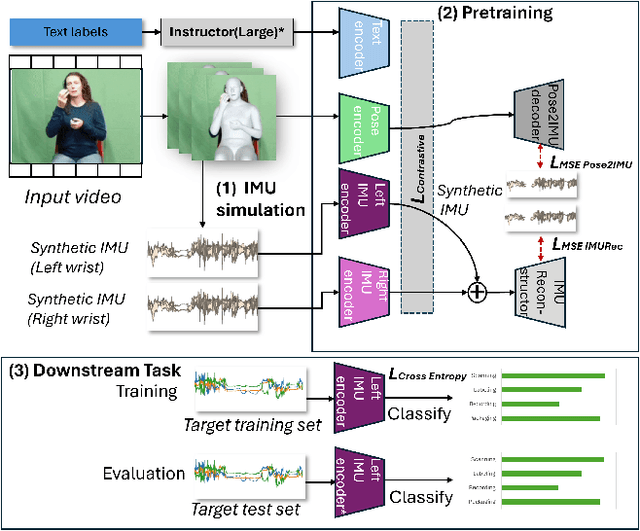
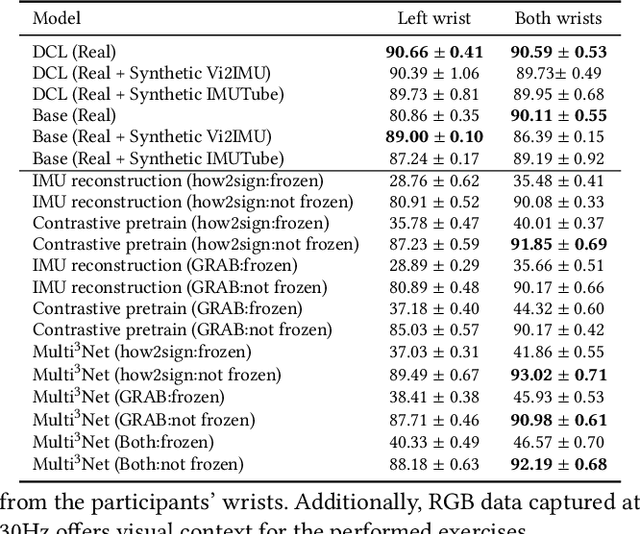
Abstract:Due to the scarcity of labeled sensor data in HAR, prior research has turned to video data to synthesize Inertial Measurement Units (IMU) data, capitalizing on its rich activity annotations. However, generating IMU data from videos presents challenges for HAR in real-world settings, attributed to the poor quality of synthetic IMU data and its limited efficacy in subtle, fine-grained motions. In this paper, we propose Multi$^3$Net, our novel multi-modal, multitask, and contrastive-based framework approach to address the issue of limited data. Our pretraining procedure uses videos from online repositories, aiming to learn joint representations of text, pose, and IMU simultaneously. By employing video data and contrastive learning, our method seeks to enhance wearable HAR performance, especially in recognizing subtle activities.Our experimental findings validate the effectiveness of our approach in improving HAR performance with IMU data. We demonstrate that models trained with synthetic IMU data generated from videos using our method surpass existing approaches in recognizing fine-grained activities.
Text me the data: Generating Ground Pressure Sequence from Textual Descriptions for HAR
Feb 22, 2024



Abstract:In human activity recognition (HAR), the availability of substantial ground truth is necessary for training efficient models. However, acquiring ground pressure data through physical sensors itself can be cost-prohibitive, time-consuming. To address this critical need, we introduce Text-to-Pressure (T2P), a framework designed to generate extensive ground pressure sequences from textual descriptions of human activities using deep learning techniques. We show that the combination of vector quantization of sensor data along with simple text conditioned auto regressive strategy allows us to obtain high-quality generated pressure sequences from textual descriptions with the help of discrete latent correlation between text and pressure maps. We achieved comparable performance on the consistency between text and generated motion with an R squared value of 0.722, Masked R squared value of 0.892, and FID score of 1.83. Additionally, we trained a HAR model with the the synthesized data and evaluated it on pressure dynamics collected by a real pressure sensor which is on par with a model trained on only real data. Combining both real and synthesized training data increases the overall macro F1 score by 5.9 percent.
Contrastive Left-Right Wearable Sensors (IMUs) Consistency Matching for HAR
Nov 21, 2023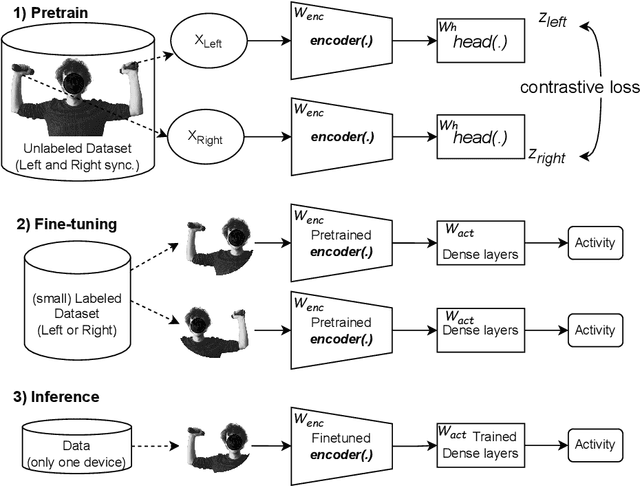
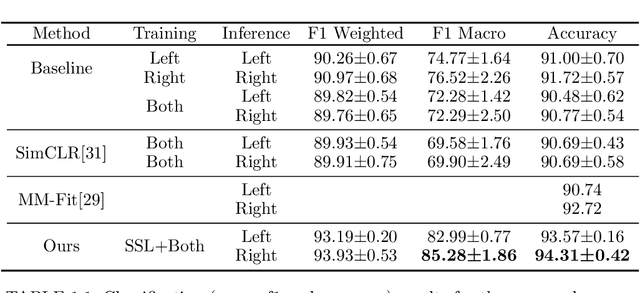
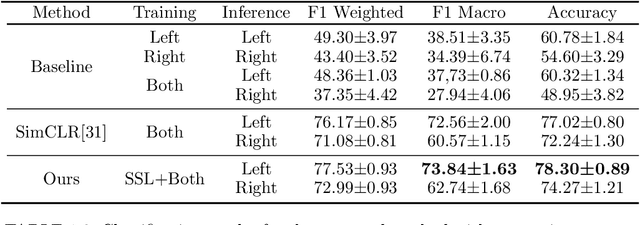
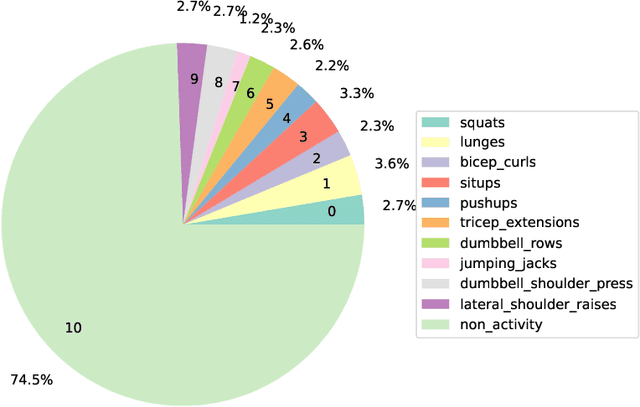
Abstract:Machine learning algorithms are improving rapidly, but annotating training data remains a bottleneck for many applications. In this paper, we show how real data can be used for self-supervised learning without any transformations by taking advantage of the symmetry present in the activities. Our approach involves contrastive matching of two different sensors (left and right wrist or leg-worn IMUs) to make representations of co-occurring sensor data more similar and those of non-co-occurring sensor data more different. We test our approach on the Opportunity and MM-Fit datasets. In MM-Fit we show significant improvement over the baseline supervised and self-supervised method SimCLR, while for Opportunity there is significant improvement over the supervised baseline and slight improvement when compared to SimCLR. Moreover, our method improves supervised baselines even when using only a small amount of the data for training. Future work should explore under which conditions our method is beneficial for human activity recognition systems and other related applications.
Worker Activity Recognition in Manufacturing Line Using Near-body Electric Field
Aug 07, 2023



Abstract:Manufacturing industries strive to improve production efficiency and product quality by deploying advanced sensing and control systems. Wearable sensors are emerging as a promising solution for achieving this goal, as they can provide continuous and unobtrusive monitoring of workers' activities in the manufacturing line. This paper presents a novel wearable sensing prototype that combines IMU and body capacitance sensing modules to recognize worker activities in the manufacturing line. To handle these multimodal sensor data, we propose and compare early, and late sensor data fusion approaches for multi-channel time-series convolutional neural networks and deep convolutional LSTM. We evaluate the proposed hardware and neural network model by collecting and annotating sensor data using the proposed sensing prototype and Apple Watches in the testbed of the manufacturing line. Experimental results demonstrate that our proposed methods achieve superior performance compared to the baseline methods, indicating the potential of the proposed approach for real-world applications in manufacturing industries. Furthermore, the proposed sensing prototype with a body capacitive sensor and feature fusion method improves by 6.35%, yielding a 9.38% higher macro F1 score than the proposed sensing prototype without a body capacitive sensor and Apple Watch data, respectively.
 Add to Chrome
Add to Chrome Add to Firefox
Add to Firefox Add to Edge
Add to Edge